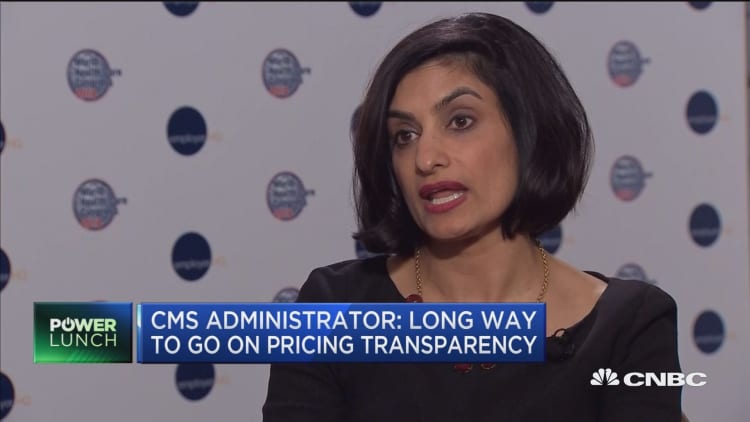
This year, high-income retirees can expect to shell out even more money to cover their Medicare premiums.
That's because as of 2018, there is a shift in the income brackets that are used to determine how much older Americans will pay for their Medicare Part B and Part D coverage, according to a recent analysis by HealthView Services, a provider of health-care cost projection software.
Medicare Part B covers preventive services and doctor visits, and Part D covers prescription drugs.
These surcharges could take a bigger bite out of present and future retirees' income than they may have expected.
More from Fixed Income Strategies:
How to avoid the Social Security check blues
These Social Security myths can wipe you out
Few are prepared for this $280K retirement expense
A 55-year-old couple, where each spouse earns $70,000, could anticipate seeing their lifetime Medicare surcharges rise by almost $122,000 due to changes to how the health-care program charges its beneficiaries, HealthView Services found.
You are eligible for Medicare at 65, so this hypothetical couple has 10 years until they qualify.
The highest earners may end up paying 200 percent more for Parts B and D compared to someone in the first bracket.
"The fear is that things will continue along these lines where future retirees will be responsible for more and more of their medical costs and will be receiving less in terms of compensation," said Ron Mastrogiovanni, CEO of HealthView Services.
Here's what's driving your Medicare costs.

"DocFix" bump
A 2015 bill, known as the Medicare Access and CHIP Reauthorization Act or "DocFix" law, tweaked the way premiums are determined for high-income people.
It lowers the ranges for the third, fourth and fifth income brackets, bumping some retirees into the next bracket, which raises their Medicare costs.
These changes began to take effect for premiums charged in 2018.
How much you pay this year for Medicare Parts B and D is determined by your 2016 modified adjusted gross income.
In 2018, premiums for Medicare Part B are $134 a month for singles with a modified adjusted gross income of $85,000 or less in 2016 ($170,000 for married joint filers).
Beyond those income levels, premiums begin to increase. See below.
Meanwhile, Part D beneficiaries also pay additional expenses on top of their plan premiums if their 2016 MAGI exceeded $85,000 ($170,000 if married). This chart shows 2018 costs.
Finally, the chart below depicts how the MAGI brackets changed for Medicare, following the "DocFix" tweaks and where the new income thresholds are in 2018.
Budget changes
The Bipartisan Budget Act of 2018 made another change to Medicare, which will take effect in 2019.
Starting that year, individuals with incomes exceeding $500,000 ($750,000 for couples) will pay higher Medicare surcharges — 85 percent of their program costs, up from 80 percent under current law, according to the Medicare Rights Center, a consumer advocacy group.
Managing your income
Higher-income retirees can attempt to rein in their Medicare premiums by planning out their income sources prior to applying for the program.
For instance, income from a Roth IRA and Roth 401(k) plan doesn't count toward your modified adjusted gross income , and thus won't raise your Medicare premiums.
An added bonus: You don't have to take required minimum distributions from Roth IRAs at 70½. Traditional IRAs and 401(k) plans are subject to this requirement.
Make sure you don't convert your savings to a Roth in the two years before you apply for the program — the amount converted is considered taxable income and will count toward your MAGI.

Other savings sources that aren't counted in Medicare means testing include health savings accounts and the cash value of a permanent life insurance policy.
Health savings accounts, or HSAs, work alongside high-deductible insurance plans. They grow tax free, and investors can take tax-free withdrawals as long as they're using the money for qualified medical expenses.
You can't stash additional funds in an HSA once you're on Medicare, but you can still tap your savings in retirement.
"The key is to work with an advisor and look at the right mix of products, stocks, bonds, insurance and Roth accounts so that you don't get hit by these surcharges," said Mastrogiovanni.





